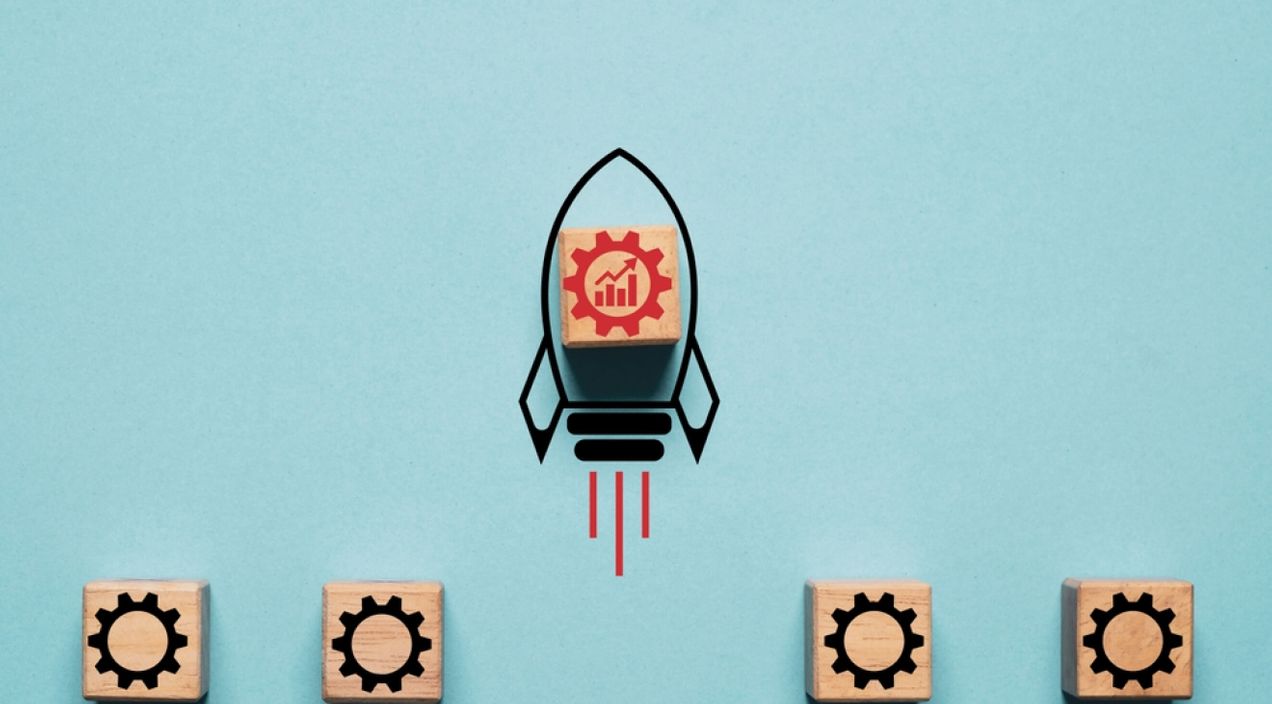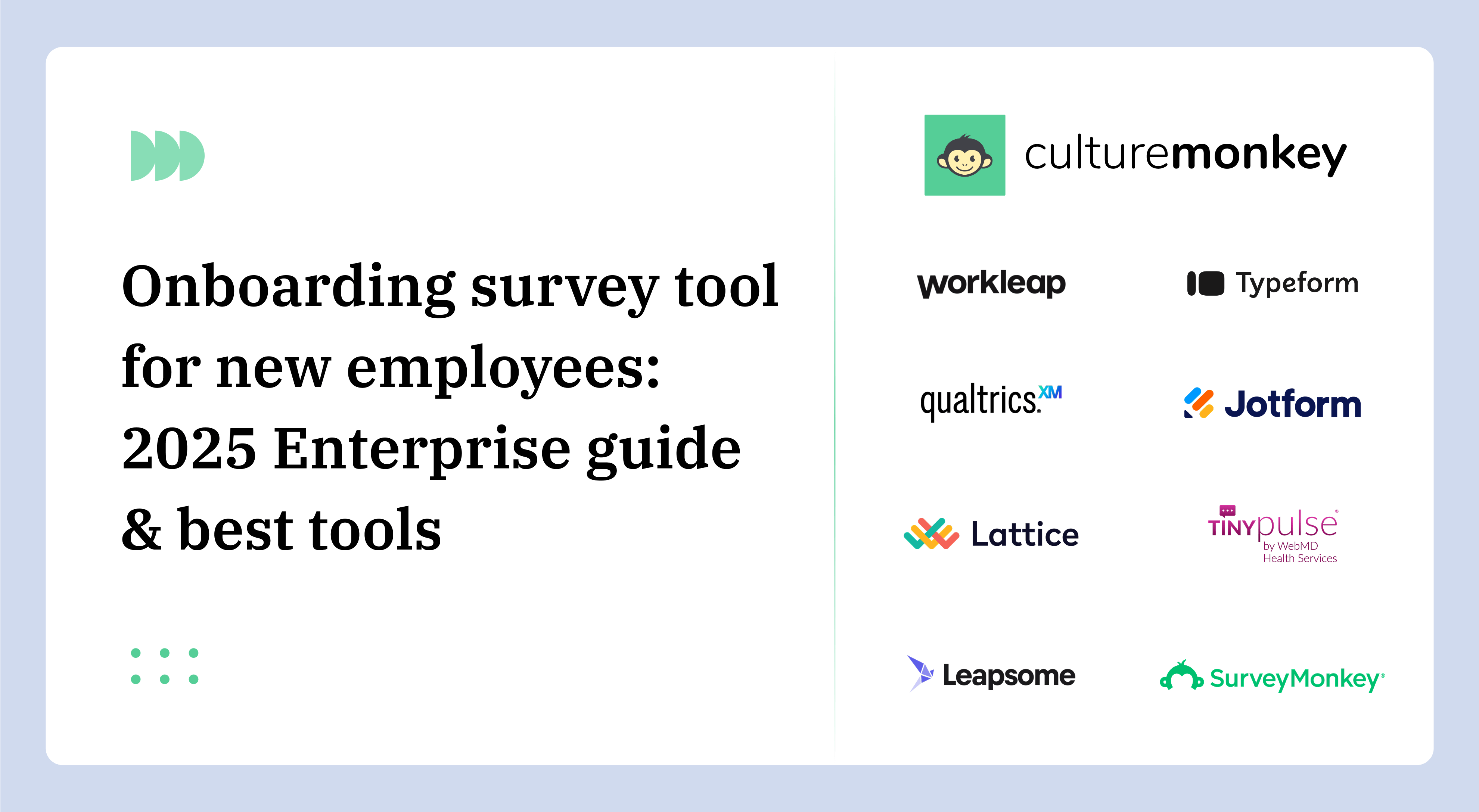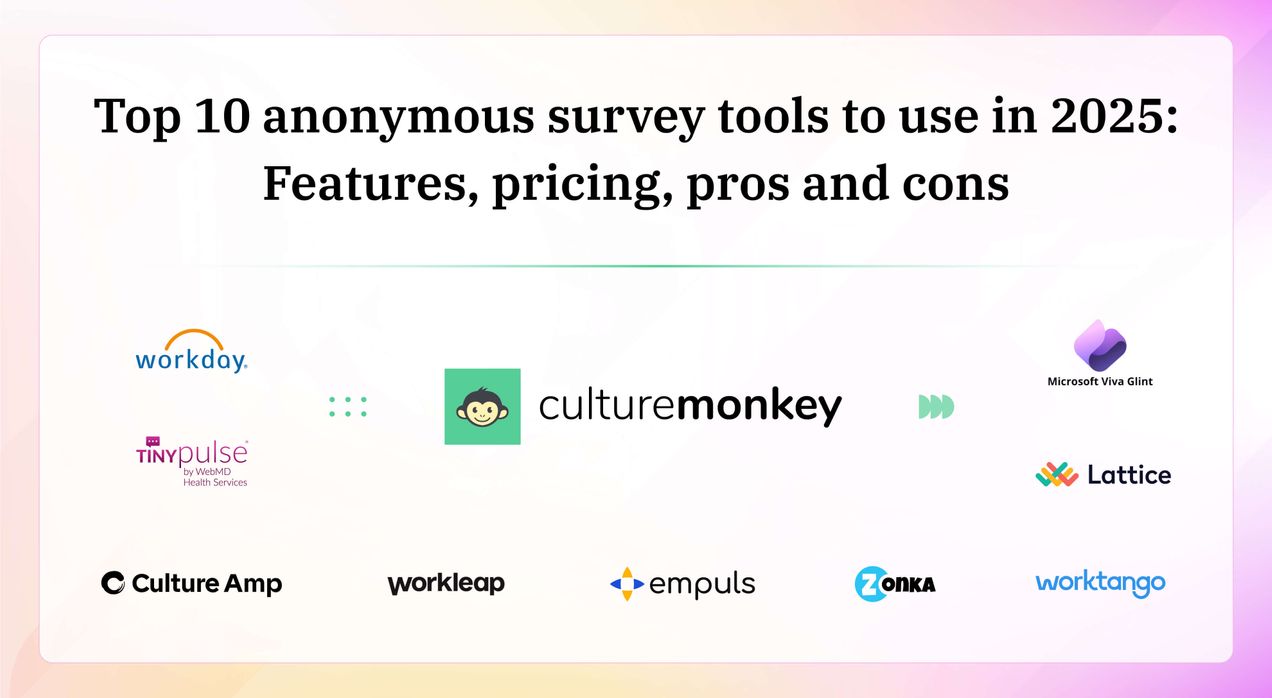15 Manufacturing workforce communication challenges holding back today’s factories
Manufacturing workforce communication challenges arise when information fails to travel clearly across shifts, roles, languages, and tools on the factory floor. These gaps cause missed handovers, delayed updates, safety risks, low morale, and execution issues, even when leadership intent is clear.
What an effective eNPS survey template should look like in 2026
A practical guide to eNPS templates: what eNPS measures, core and follow up questions, template types, and how to turn scores into real culture engagement and retention improvements across all teams!
Best 20+ Qualtrics alternatives for enterprises and SMBs in 2026
Exploring Qualtrics employee experience alternatives can help your organization find the best fit for your needs. Whether you're looking for more customization, better pricing, or advanced features, this blog will guide you through the top options to enhance your employee engagement.
Job satisfaction survey template for enterprises: A strategic guide (2026)
A job satisfaction survey template is a structured framework HR teams use to measure how employees feel about their roles, leadership, recognition, and growth. It ensures consistent questions, captures honest feedback, enables benchmarking across teams, & turns insights into actionable improvements.
Employee insights: How to unlock smarter decisions and drive engagement in 2026
Employee insights are the patterns, perceptions, and signals you gather from your workforce to understand how they think, feel, and behave at work. They go beyond surface-level feedback and help leaders interpret what employees actually experience day to day.
How to measure and improve employee satisfaction rate: a complete guide for HR leaders
The employee satisfaction rate measures how content and fulfilled employees feel about their workplace, job roles, and experience within the organization. It acts as a thermometer for workplace satisfaction, providing insights into employee morale, engagement, and potential areas of improvement.
13 Strategies to drive manager effectiveness in workplaces
Manager effectiveness refers to how well a manager achieves business outcomes through their team while maintaining a healthy, motivated, and productive work environment. It’s not just about hitting performance targets, but the ability to influence, guide, and empower people to perform at their best.
How to improve employee net promoter score and boost workplace loyalty?
A low employee net promoter score doesn’t just happen overnight, it’s usually a reflection of ongoing issues that slowly chip away at trust, motivation, and connection. Poor work-life balance is a common underlying cause, often leading to burnout and disengagement.
Pulse survey action plan for HR teams that want real change
A pulse survey action plan is the structured roadmap HR and people teams use to turn employee feedback into clear, measurable steps for improvement. After running a pulse survey, which captures quick, real-time insights into employee sentiment, the action plan outlines what happens next.
50+ Employee recognition ideas to celebrate your team in 2026
Employee recognition is about making people feel genuinely valued for their contributions and impact. When employees know their work is seen and appreciated, they’re more engaged, employees feel motivated and loyal.
Employee satisfaction survey form: Perfect questionnaire to know your people in 2026
An employee satisfaction survey form helps leaders measure satisfaction, gather feedback, and improve engagement. This guide explores benefits, tips, and tools with a free ready-to-use template, making surveys smarter, simpler, and more impactful for every workplace.
A complete guide to third party survey companies for employee engagement
Explore the top 7 employee third-party survey companies and discover how they help HR leaders capture honest feedback, improve engagement, and strengthen workplace culture. Learn how the right external partner ensures anonymity, builds trust, and turns survey results into actionable insights.
Employee engagement survey invitation email sample: Boosting participation with a perfect message
An employee engagement survey invitation email invites staff to share honest feedback. It explains the survey’s goal, assures confidentiality, and shows how insights will help improve engagement, culture, and the overall employee experience.
Employee development plan template: How to help your team grow with clarity in 2026
An employee development plan template is a structured roadmap that outlines goals, skills, and actions to help employees grow, align with business objectives, and advance their careers.
Deskless workforce communication problems: Why it’s broken and how to fix it in 2025
The global workforce, particularly the deskless workforce, includes employees who spend little to no time working at a traditional desk or office environment. They’re the people keeping operations running in the field, on the shop floor, or face-to-face with customers.
30+ IT department survey questions for employees: What to ask, how to ask, and why it matters in 2025
An IT department survey for employees is a structured way to gather feedback on how well your internal tech systems, services provided, and support are actually working for the people using them every day. It goes beyond ticket counts or system uptime stats—it taps into the employee experience.
How to approach eNPS calculation in 2025: A complete guide
eNPS, or Employee Net Promoter Score, is a metric designed to measure employee satisfaction and loyalty within an organization. Built on the traditional Net Promoter Score (NPS) model, eNPS gauges how likely employees are to recommend their workplace to others and are engaged in the company.
Company surveys for employees: 15 Different types every HR team should know
Explore the top 15 employee survey types and 100+ ready-to-use questions that help HR leaders gather honest feedback, improve engagement, and strengthen workplace culture. Learn how the right survey design builds trust and turns responses into actionable insights.
Employee engagement in food and beverage industry: A complete guide (Examples & survey questions)
Employee engagement in the food and beverage industry is key to reducing turnover. Explore examples, survey questions, and tools that help build loyalty, trust, and stronger workplaces.
Employee satisfaction survey results: Communication best practices for better engagement
Employee satisfaction survey results communication is the process of sharing the findings of your internal surveys back with employees in a clear, timely, and meaningful way. It goes beyond just showing numbers or percentages—it’s about translating the employee feedback data into insights.
Employee engagement survey email: Templates, enterprise strategy, & best practices for 2025
An employee engagement survey email is a message sent by HR or leadership to invite employees to participate in a feedback survey about their workplace experience. It typically includes a brief explanation of the survey’s purpose, a clear cta, the expected time to complete it, and a link.
Human resources survey: Template, questions & best practices
A human resources survey is a structured way to capture employee feedback on HR services, policies, and overall effectiveness. It gives HR teams visibility into how their efforts shape employee experience and provides data-driven insights to improve everything from onboarding to conflict resolution.
Onboarding survey tool for new employees: 2025 Enterprise guide & best tools
Discover the best onboarding survey tools for new employees in 2025. Learn how HR leaders can capture early feedback, build trust, and improve retention. The right platform ensures anonymity, streamlines check-ins, and turns onboarding data into actionable insights for long-term employee success.
Top 10 anonymous survey tools to use in 2025: Features, pricing, pros and cons
Explore the best anonymous survey tools in 2025 and learn how they enable leaders to capture candid feedback, measure engagement, & strengthen workplace trust. Discover how the right platform encourages honesty & transforms survey data into actionable insights that drive real organizational change.

























